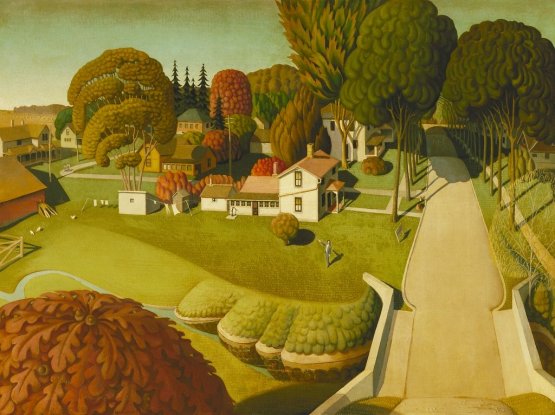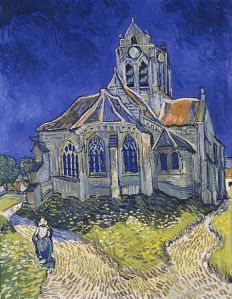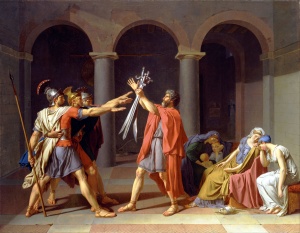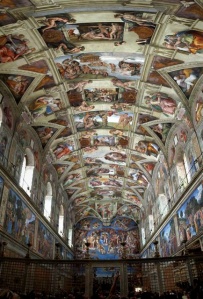A few years ago I traveled to the Czech Republic and Germany. For a few days my group toured Prague. We visited museums, cathedrals, and other historical sites. All throughout my time there I was intrigued by the variety of art throughout the city. I chose to narrow it down to Czech Contemporary Art (2000-present).

This sculpture, Entropa, was created by David Černý in 2009. Černý, born in 1967, is a popular artists whose works can be seen in many locations in Prague. He is became famous after painting a Soviet tank pink to serve as a war memorial in central Prague. Personally, I find his work strange such as his piece entitled A Tower Baby, in which giant babies are climbing a tower. This piece, Entropa, was commissioned by the Czech Republic to mark the occasion of its presidency of the Council of the European Union. It is an ironic jab at the issue of European integration and the stereotypes associated with each EU country. The sculpture is 256 square meters and weighs 8 tonnes. I enjoy this sculpture due to the size and the detail in each individual piece.
Cat, painted by Petr Nikl in 2011. Petr Nikl, born in 1960, is a Czech painter, musician, photographer, and dramatist. Most of his paintings exhibit masks that resemble a strange animal. He has other more colorful paintings of a Parrot, Bat, Deer, and eyes. This painting uses smooth lines, shading, and a little imagination to portray a fox. I like how simple and sleek it is. I checked out some of his other paintings and can see similar attributes in them.

This painting, Ohořelé dřevo, was done by Martin Mainer in 2012. Mainer, born 1959, is a Czech artist and professor. In 1993 he received the Jindřich Chalupecký Award (the most prestigious Czech art prize). A majority of his pieces of geometric, colorful, and abstract. I could not find a valid description of the painting but it seems to be sticks and clouds. I love this piece due to its pattern appearance, 3D aspect, and the colors. A list of his other pairings can be found here.
Works Cited
“Adam Gallery.” Mainer Martin -. N.p., n.d. Web. 05 Dec. 2014. <http://www.ragallery.cz/mainer-martin>.
“Contemporary Czech Art | Prague Gallery.” Contemporary Czech Art. N.p., n.d. Web. 05 Dec. 2014. <http://www.prague-art.cz/catalogue/czech-contemporary-art/>.
“Czech Republic.” Mapping the 20th Century: A Journey through Czech Art. N.p., n.d. Web. 05 Dec. 2014. <http://theculturetrip.com/europe/czech-republic/articles/mapping-the-20th-century-a-journey-through-czech-art/>.
“David Černý.” Wikipedia. Wikimedia Foundation, 30 Nov. 2014. Web. 05 Dec. 2014. <http://en.wikipedia.org/wiki/David_%C4%8Cern%C3%BD>.
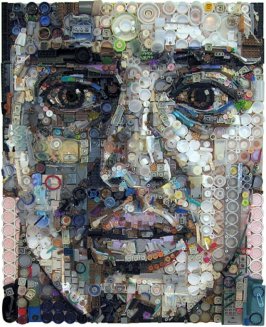

 This is his most famous pieces from his Wasteland exhibition. The Gypsy (Magna) was created in 2008 in Rio de Janeiro. It is an excellent representation of a woman who worked at the dump picking trash to help feed her family. The actual portrait is completely made out of trash retrieved from that same dump.
This is his most famous pieces from his Wasteland exhibition. The Gypsy (Magna) was created in 2008 in Rio de Janeiro. It is an excellent representation of a woman who worked at the dump picking trash to help feed her family. The actual portrait is completely made out of trash retrieved from that same dump.

